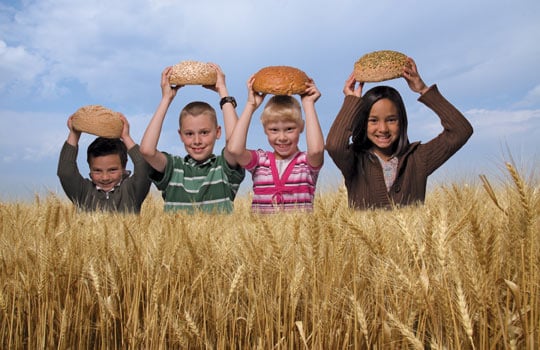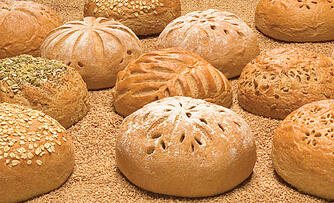When I was a kid my dad would not allow me to leave the dinner table until I cleared at least one black eyed pea from my plate every New Year’s Day. It may sound strange, but my dad had always abided to the southern tradition himself as consuming at least one black eyed pea on New Year’s Day would lead to 365 days of good fortune, prosperity, and health. He wasn’t about to let his daughter miss out on such a good trade off so each year he would make sure I got that one pea into my meal somehow. I agree, one pea for an awesome year is not too shabby of a deal.
Adolescents and obesity study. Such a transaction is hard to come by, but a recent study published in the Journal of the Academy of Nutrition and Dietetics has found a different relationship between food and health for your children but this payoff may last a lifetime. The study published in JAND was actually one of few to look into the relationship between whole grain intake and chronic disease indicators specifically for adolescents (1). Studies with adults have consistently indicated a strong correlation between whole grains and cardiovascular disease risk factors. Unfortunately, the obesity epidemic has been extending from the adult population into that of the youth bringing forth a new area of concern.

Obesity risks for teens. As a result of the obesity we are seeing cardiovascular disease and diabetes risk factors being expressed in children and adolescents. In fact, according to the Child Trends Data Bank more than one in six adolescents ages 12-19 were overweight in the U.S. in 2003-3004 (2). Just like adults, children and adolescents who are overweight are at an increased risk of developing disease including type 2 diabetes, cardiovascular problems, orthopedic abnormalities, gout, arthritis, and skin issues. This is scary because cardiovascular disease (CVD) is the leading cause of death among adults in the United States. Starting the onset of such a disease can result in premature death. Not only this, but quality of life is often reduced due to a negative effect on social and psychological development (2).
Cardiovascular disease a concern. Among other things, being overweight or obese results in expression of CVD risk factors including abnormal lipid levels during childhood and adolescence. There is a prevalence of abnormal lipid levels in 20.3% of adolescents age 12-19(3). With obese adolescents, there was at the very least one abnormal lipid level in 42.9% of them (3). Due to the severity of such issues amongst our youth, the Surgeon General has a call to action to prevent and decrease overweight and obesity in children and adolescents (4).
 Benefits of whole grains and fiber. Whole grains, like all whole foods, maintain every natural component of their makeup by avoiding the refining process. Whole grains, including whole wheat bread, maintain a wide array of bioactive components including dietary fiber, phytosterols, minerals, antioxidants, vitamin E and folate which may act synergistically to reduce risk of chronic disease. This makes sense as the study revealed that as whole grain intake increased so did dietary fiber intake and folate levels in both boys and girls (1). Levels of homocysteine, a substance which may be linked to stroke, heart disease, and peripheral artery disease, also dropped in boys with increased whole grain intake. Results of the study showed a positive association between daily whole grain intake and HDL (good cholesterol) in girls. The fiber and other phytochemicals within the whole grains may be the cause behind the minimized risk factors for type 2 diabetes and cardiovascular disease that were linked to adolescents with high whole grain intake (1). Fiber has also been shown to control appetite by producing and prolonging a feeling of satiety. This too could be a key tool in protecting children and adolescents from not only overweight and obesity, but also the associated chronic diseases.
Benefits of whole grains and fiber. Whole grains, like all whole foods, maintain every natural component of their makeup by avoiding the refining process. Whole grains, including whole wheat bread, maintain a wide array of bioactive components including dietary fiber, phytosterols, minerals, antioxidants, vitamin E and folate which may act synergistically to reduce risk of chronic disease. This makes sense as the study revealed that as whole grain intake increased so did dietary fiber intake and folate levels in both boys and girls (1). Levels of homocysteine, a substance which may be linked to stroke, heart disease, and peripheral artery disease, also dropped in boys with increased whole grain intake. Results of the study showed a positive association between daily whole grain intake and HDL (good cholesterol) in girls. The fiber and other phytochemicals within the whole grains may be the cause behind the minimized risk factors for type 2 diabetes and cardiovascular disease that were linked to adolescents with high whole grain intake (1). Fiber has also been shown to control appetite by producing and prolonging a feeling of satiety. This too could be a key tool in protecting children and adolescents from not only overweight and obesity, but also the associated chronic diseases.
Provide tasty, whole grain options for kids. Currently, adolescents are consuming a mere 0.6 to 0.8 servings of whole grains every day. This sounds much worse when compared to the current recommended minimum of 3 whole grain servings per day. Introduce your kids to great tasting whole wheat bread. Teach them the importance of not only whole grain intake, but also fruits, vegetables, low fat dairy, and lean protein as a part of their diet. Keep their foods whole to provide them with as many beneficial components the food has to offer. While many may debate that you can’t teach an old dog new tricks, there is no question you can certainly teach a young one.
current recommended minimum of 3 whole grain servings per day. Introduce your kids to great tasting whole wheat bread. Teach them the importance of not only whole grain intake, but also fruits, vegetables, low fat dairy, and lean protein as a part of their diet. Keep their foods whole to provide them with as many beneficial components the food has to offer. While many may debate that you can’t teach an old dog new tricks, there is no question you can certainly teach a young one.
1.) Hur I Y, Reicks M. Relationship between Whole Grain Intake, Chronic Disease Risk Indicators, and Weight Status among Adolescents in the National Health and Nutrition Examination Survey, 1999-2004. J Academy of Nutr and Dietetics. 2012; 112 (1) 46-55.
2.) Child Trends DataBank. Overweight Children and Youth. Accessed Feb. 2012.
3.) Prevalence of abnormal lipid levels among youths—United States, 1999-2006 . MMWR Morbid Mortal Wkly Rep . 2010;59(3):29–33
4.) U.S. Department of Health and Human Services. The Surgeon General's Call to Action to Prevent and Decrease Overweight and Obesity. U.S. Department of Health and Human Services, Public Health Service, Office of the Surgeon General; [2001]. Accessed Feb 2012.




